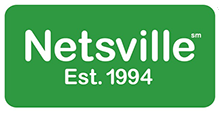A few weeks ago, I took a class at Sephora on how to apply foundation—a life skill I failed to acquire in seventh grade probably because I had my oily nose buried in a book.
The beauty retailer offers a number of these free hands-on tutorials, which I had learned about from a friend after commiserating on the mystical art of “contouring.*” This particular one focused on Rihanna’s Fenty line, and over the course of an hour, an instructor walked me and another registrant through a step-by-step application of everything from primer to highlighter.
I didn’t walk away a beauty expert or a pop icon, but I did leave with some actionable tips—and a full bag of makeup. I had gone from try to buy in 60 minutes and spent more than double what InfoScout reports as the average basket size for Sephora.
I’m getting pink in the cheeks just typing this, and I know it’s not blush, because I haven’t taken that class yet.
If I’d shopped online, I doubt I would have purchased half the items I did. So the fact that I had spent with such abandon got me thinking: Does getting a product literally into a consumers’ hands increase purchase intent?
What I found surprised me. Despite the fact that we can buy anything and everything on the web, 56% of consumers surveyed recently by RetailDive said they still visit retail stores to first see or touch products before buying online. That tells us that despite the prevalence of digital many consumers still want to kick the tires or apply the lipstick. And the science I uncovered behind “haptic marketing” tells us a lot about how we can influence spending in truly high-touch ways.
What is haptic marketing?
Haptic information is the information we acquire using the power of touch. Haptic marketing is a relatively new discipline that focuses on the use of tactile sensations to influence purchasing.
Back in the olden days, when shopping was done primarily in person, we frequently used haptic feedback in our product assessments—we felt fabrics, pushed buttons, squatted in jeans, and squeezed cantaloupes.
Thanks to the rise of e-commerce, we now see things in picture form and use product specs and customer reviews to fill in the gaps of our understanding.
In many cases, we don’t hold what we’ve bought until the box arrives. In some cases, that leads to disappointment: “This fabric isn’t as sturdy as I thought it would be” or “These headphones don’t feel comfortable.”
Read More at Forbes
Based in Rochester, New York, Netsville is an Internet Property Management company specializing in managing the Digital Marketing, Technical, and Business Solutions for our customers since 1994. For more information, please click here.





